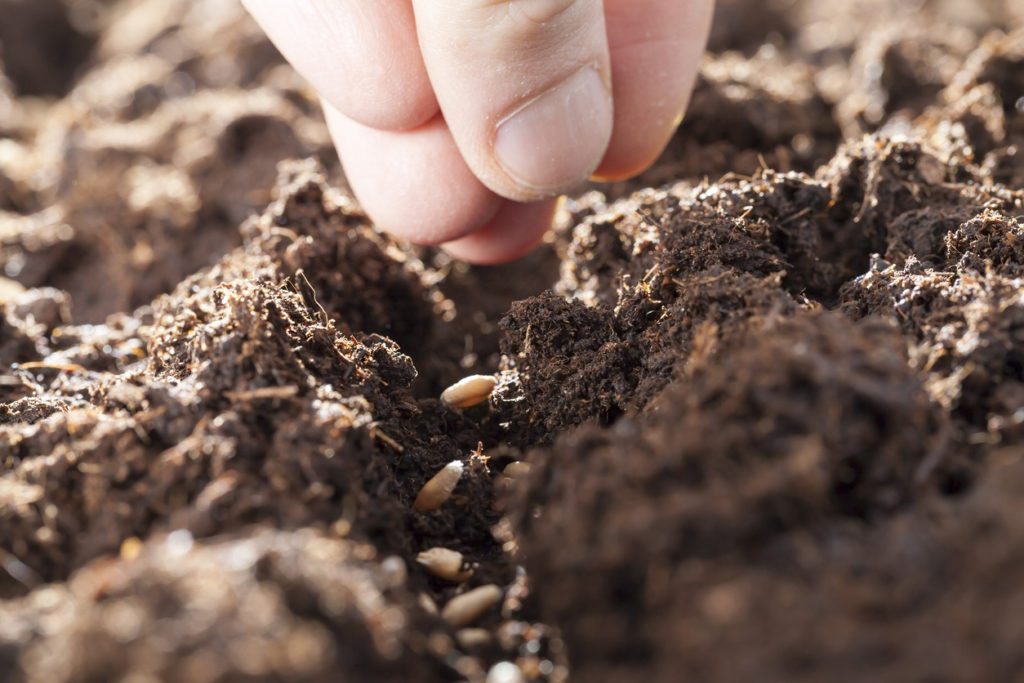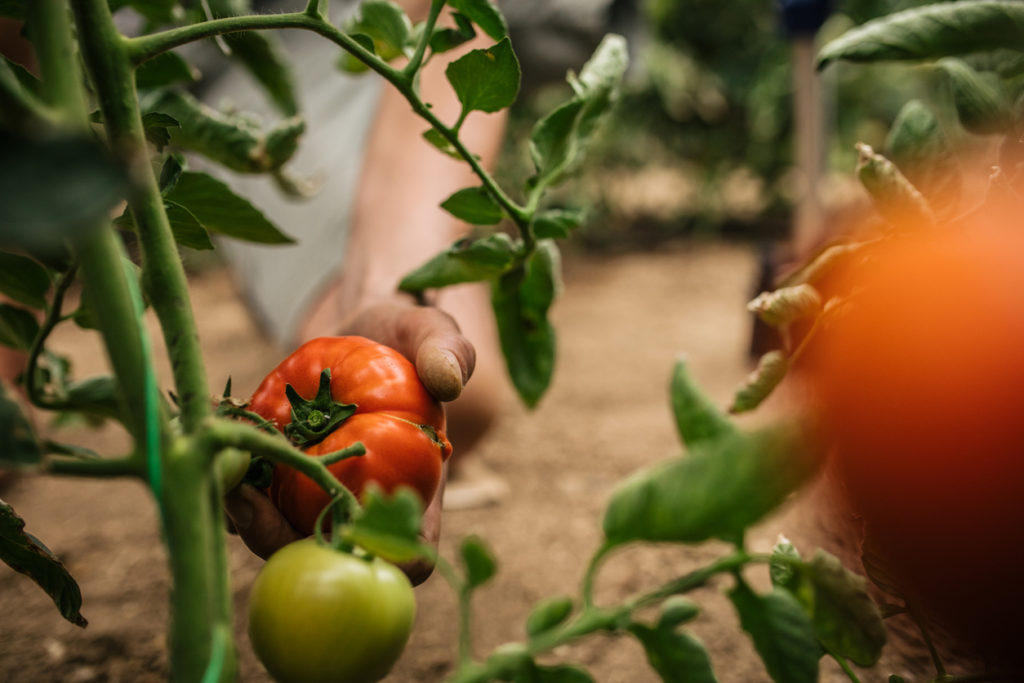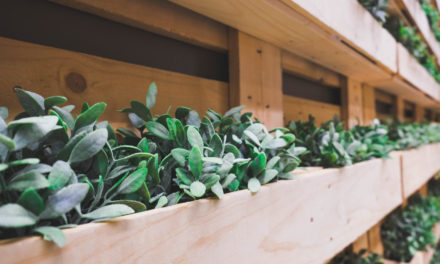What do you like best about fresh tomatoes? A bright, citrusy taste? Earthiness? More sweet than tart?
There are thousands of tomato varieties, and many seed companies carry 70 or more. How do you choose the right seeds for your vegetable garden?
Your tastes are a big part of it. Other factors are experience, variety and brand. Also, consider science. Knowing the length of the growing season, what grows best in your soil, climate zones and the timing of the first and last frosts are other determining factors.
It’s a lot to keep in mind, but help is available.
Marc Short, who with his wife cultivates the Double M Farm in Falcon, has been teaching a free seed-selection class at High Prairie Library for five years (see box). Short has raised vegetables in El Paso County since 1965. He has knowledge and experience to share far beyond the two-hour class, but it’s a start.

Photo Credit: Liliboas (iStock).
Details
Seed Selection workshop presented by Marc Short of Double M Farm in Falcon, 10 a.m. to noon Jan. 26, meeting room, High Prairie Library, 7035 Old Meridian Road, Peyton (80831). Free, 719-260-3650, ppld.org or Facebook invite.
The seeds you choose are critical to your garden’s success, he said. He typically seeks seeds for his farm in November or December, when new seeds become available. The timing of his class helps “take all that pressure of the holidays away and get folks starting to think about the garden,” he said.
Short, 62, grew up in a military family. “We moved all over the world, and my mom planted gardens wherever we were. Because my parents learned to grow gardens, I learned to grow gardens. My wife’s dad was a county agent. He grew a huge garden and added to my knowledge pool.”
El Paso County has at least three plant hardiness zones, per the U.S. Department of Agriculture (planthardiness.ars.usda.gov). They are 5a (-20 degrees F to -15), 5b (-15 to -10) and 6a (-10 to -5), though some areas on the west edge can get down to 4a (-30 to -25) and 4b (-25 to -20), Short said.
“Hardiness zones are based on the average annual extreme minimum temperature during a 30-year period in the past, not the lowest temperature that has ever occurred in the past or might occur in the future,” the USDA website says. “Gardeners should keep that in mind when selecting plants, especially if they choose to ‘push’ their hardiness zone by growing plants not rated for their zone.”
Find your Hardiness Zone (which will be referenced in seed catalogs) at the USDA site or PlantMaps.com. Plug in your ZIP code to determine the growing season — first and last frost dates — for your property. Many seed companies list planting times based on the average last frost date.
Also take into account variables on your property, such as canyons, bluffs or heavy foliage that might cause a “microclime” or other environmental variant.
“One of the gals that attended one of my classes a few years ago lives in the northeast corner of the county,” Short said. “Her property is situated so that she has a bluff on the east side. There’s no sunrise until 10:30 a.m. in the summer. So the sun’s up, but she’s still sitting in the shadow. That’s an example of a microclime that’s not spread, except over a few areas.”
On Short’s land south of U.S. 24 in Falcon, the growing season is 124 days. The Old Farmer’s Almanac says the growing season for downtown Colorado Springs (80903) is 142 days. In other Springs areas, it might be shorter or longer.
“It’s heavily misunderstood what’s the growing season and what are the days of production for a plant. The growing season for some varieties of corn is 125 days, but picking can be four weeks.”

Photo Credit: ligora (iStock).
In catalogs, you’ll see seeds described as hybrids — made by crossing two plants to achieve the best qualities of each — and heirloom seeds, referring to varieties grown before World War II. Catalogs offer a greater variety than you’ll see at a garden center.
Also consider the free seed libraries at High Prairie and Manitou Springs libraries in the Pikes Peak Library District. You can “check out” seeds that have been donated by seed companies and patrons for free and donate seeds from your crops.
Short prefers heirloom or hybridized seeds that are “non-GMO” — haven’t been genetically modified.
“I want a product that’s going to be healthy, that’s going to grow well and produce a prolific amount of product,” he said. “I’m very picky about my seeds. You’ve got to have quality seeds. And you’ve got to do what you can with the soil that you have.”
He plants a variety of veggies. “There’s a shorter list of things I don’t grow. I like to eat, and I like good food when I eat.”
Some crops that work well in this area are zucchini and other squash, lettuces, spinach, chard, kale, asparagus, beans, beets, tomatoes, peppers, corn, broccoli, cabbage and cauliflower.
Short’s go-to tomato, one he uses as an example in his class, is the Black Krim. It’s a dark purple, medium-sized heirloom tomato. “It has the high punches I want and an earthy flavor,” he said.
Cool-season crops, such as spinach, can be planted before the last frost. Tomatoes are a warm-season crop and require warmer soil and higher night temperatures. You can get a jump on planting by starting seeds indoors.

Photo Credit: South_agency (iStock).
“You can choose different varieties of vegetables with different flavor sets,” Short said. “For example, a lot of people like Walla Walla onions, a sweet yellow onion that grows bigger than your fist in regions south of us without altitudes. But we don’t live in that same growing zone. Here, to get that same quality, I lean on a product called ‘Candy.’ It grows to the same size dimensions and has very much the same flavor set.”
He advises choosing plants that have a compatible growing season.
“Many sweet corn varieties have a 120-day growing season. Unfortunately, that’s not going to work here,” Short said. “You need a 90-day growing season so you have time to pick. You can find your preferred sweetness group with your preferred texture in a product that will grow in 60 to 90 days. I grow Silver Queen, an old heirloom type.”
Choosing your seeds comes down to a mix of science and preference. Bottom line, grow something you like to eat. It helps to understand the product you want to grow, why you like it and find products that work for your garden and suit your needs.

 Photo Credit: Pekic (iStock).
Photo Credit: Pekic (iStock). 



Comment on: How to Choose the Right Seeds for Your Garden